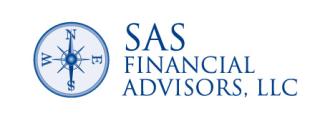
Tough First Half For Market, Unclear Future Ahead
First Half Decline
The first half of the year is done with stock market averages experiencing the largest ½ year decline since 1970. These declines include the fixed income market (bonds) as well, although the declines are less in that asset class and recently we have seen declines in interest rates as well. Headlines do not include the fact that in the 2nd half of 1970, market averages increased by 26%. Will history repeat itself? Maybe. This is why selling when the outlook is the gloomiest is not a smart strategy. It is hard to look ahead a year or two and hard to remember our own personal history when we might have made an impulsive and total decision. We hear many stories from clients and others about selling stock in 2008 and never getting back in. We know the pain of a portfolio value declining is twice as great as the delight of a portfolio value increasing. Our advice is to look at portfolio value less often and have a long term view based on your financial plan.
It is very possible, when GDP growth for the 2nd quarter is reported at the end of July, that GDP growth will be negative. Since WWII each incident of two quarters of declining GDP growth has resulted in a recession. A recession might very well be here. The Atlanta Fed live GDP tracker index indicates a negative growth number for the 2nd quarter. This index has a pretty good track record for correlation with GDP growth numbers. Historical valuation measures, such as trailing 12 month P/E ratio for the SP 500 as well as the 10 year Shiller P/E that is a poor short term indicator but more reliable long term indicator, are closer to historical standards but still have a ways to go to get to the average. The pattern since 2008 is that these averages tend to not decline to previous levels that are far below fair value. Information and analysis pushes investors to move quicker than in past severe market declines. In 2008, market measures seemed to bottom out at the longer term average. Previous to 2008, market measures overshot their average numbers to provide extremely attractive values. This makes market timing in regard to market bottoms very challenging and in fact impossible.
As the markets open after the July 4th weekend, recession fears are growing. Markets are reacting as are interest rates. Market averages are lower and so are interest rates longer than 1 year. Flattening of the yield curve is consistent with growing fears of a recession. There is some good news with the California legislature passing a bill to provide most CA families with payments to help with inflation costs. Any family making under $500,000/year and paying CA taxes in 2020 will receive payments in October. To discover what your refund will be, the Franchise Tax Board has set up a webpage: https://www.ftb.ca.gov/about-ftb/newsroom/middle-class-tax-refund/middle-class-tax-refund.html?WT.ac=Newsroom_MCTR
This website is informational only and does not constitute investment advice or a solicitation. Investments and investment strategies recommended in this blog may not be suitable for all investors. SAS Financial Advisors, LLC and its members may hold positions in the securities mentioned within this newsletter.
The SAS Newsletters are posted on the SAS Blog weekly: https://www.sasadvisors.com/blog

